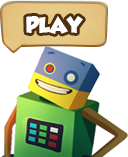RoboGarden can teach anyone to code. It begins with basic commands and teaches the necessary coding concepts so that, upon completion, the learner is prepared to help meet the enormous demand for coders in 21st century business.

Story-Based … Graphics Enabled

Mission-Based … Challenge Equipped

Hint System … Step by Step Tutorials
Our lessons do not encourage violence. They include moral foundations and teach valuable lessons across all journeys.
We are confident RoboGarden will teach you to code with ease or we'll give your money back!
All payment transactions are processed and secured by Stripe. We never store any credit card information.
Our dedicated support team is available 24/7 and is ready to help you enjoy a nonstop coding experience.
RoboGarden's revolutionary method of teaching programming languages from the beginner to the professional level is applied through eight or more Journeys that teach JavaScript and Python.
Students grow familiar with programming concepts and basic syntax and structure.
Students become familiar with complete program structures specific to the programming language of their choice while learning more about complex programming syntax.
Students get ready to join the professional world of programming complex applications.

Do you want to learn coding in less time than possible and without any money, join us on the best platform ever on learning coding as a game for kids?

